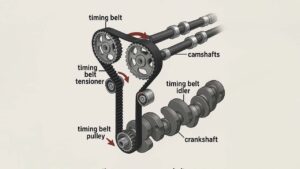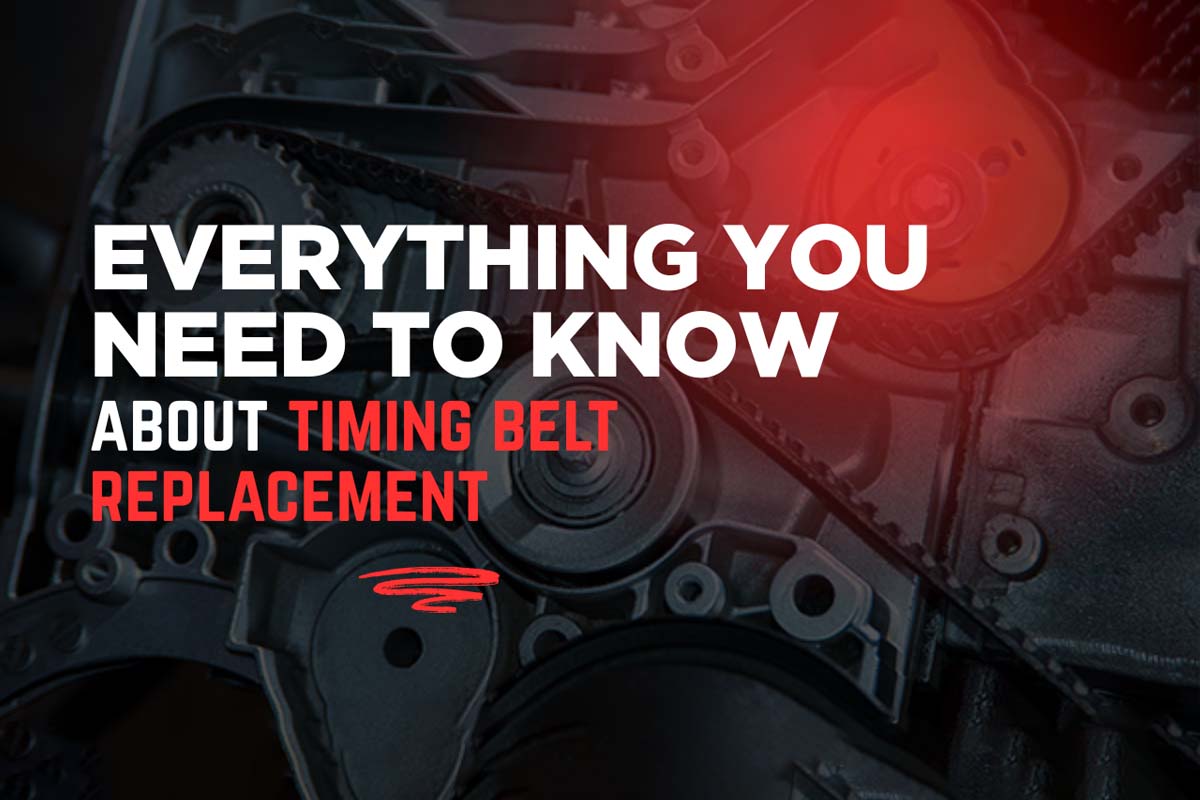Everything You Need to Know About Timing Belt Replacement
The timing belt is a crucial component of your car’s engine, responsible for ensuring the smooth operation of the engine’s internal mechanics. It’s a rubber belt with teeth that keeps the camshaft and crankshaft in sync, so your engine’s valves open and close at the correct times. If you neglect your timing belt or fail to replace it when needed, you could face significant engine damage that might cost thousands to repair. In this article, we’ll explain what a timing belt is, how it functions, and provide detailed information about the timing belt replacement cost and the reasons why it’s essential to replace it on time.
What is a Timing Belt?
A timing belt is an integral part of your car’s engine that controls the timing of the engine’s valves and pistons. It connects the crankshaft to the camshaft, ensuring the proper opening and closing of the engine’s valves in sync with the piston’s position. This precise synchronization allows the engine to run efficiently and prevents collisions between the pistons and valves.
Timing belts are typically found in interference engines. These types of engines have a design in which the valves and pistons occupy the same space. The timing belt ensures that these components do not collide. If the belt breaks or malfunctions, the pistons could hit the valves, causing catastrophic damage to the engine. It is, therefore, crucial to maintain the timing belt in good condition.

What Does a Timing Belt Do?
The primary function of a timing belt is to keep the camshaft and crankshaft in perfect synchronization. The crankshaft controls the movement of the pistons, while the camshaft controls the valves. If these two components are not synchronized correctly, the engine could misfire, run inefficiently, or even suffer severe mechanical damage.
In addition to controlling the timing of the pistons and valves, the timing belt also drives other components in the engine, such as the water pump, which is vital for cooling the engine. Because of its critical role, it’s important to replace the timing belt at regular intervals to avoid serious engine issues.
How Much Does it Cost to Replace a Timing Belt?
One of the most common questions car owners ask is, “How much does it cost to replace a timing belt?” The timing belt replacement cost can vary significantly based on factors like the make and model of your car, the mechanic you choose, and whether additional components need replacement.
On average, the cost of changing a timing belt typically ranges from $400 to $1,000. The timing belt replacement cost is generally higher for luxury cars and foreign models, where parts and labor tend to be more expensive. The price can also be affected by your location, as labor rates vary across the country.
Breakdown of Costs
- Parts Cost: The timing belt itself usually costs between $100 and $300, depending on the car’s model. Some vehicles use more complex belts or require specific parts that may be priced higher.
- Labor Cost: Labor is a significant portion of the timing belt replacement cost, typically ranging from $200 to $500 or more. This can be higher if your car’s engine is difficult to access or if extra components need to be replaced.
- Additional Components: Many mechanics recommend replacing additional components when changing the timing belt. These include the water pump, tensioners, and pulleys, which can cost anywhere from $100 to $400. Replacing these parts during the timing belt replacement can save you money in the long run, as they often wear out around the same time.
How Much to Replace a Timing Belt?
If you’re wondering how much to replace a timing belt, the price will largely depend on the same factors mentioned above: vehicle make and model, labor rates, and whether additional parts are involved. For instance, replacing the timing belt on a compact car may cost between $400 and $600, while for more complex vehicles or luxury models, the cost can reach $1,000 or more.
It’s also important to note that some mechanics may offer discounted rates for timing belt replacement if you bundle the service with other engine maintenance tasks.
When Should You Replace Your Timing Belt?
A critical question every car owner should ask is: When should I replace my timing belt? Most manufacturers recommend replacing the timing belt every 60,000 to 100,000 miles, but it’s always best to consult your owner’s manual to find the specific recommendation for your car. In addition to following the manufacturer’s guidelines, you should also watch for signs of wear and tear on the timing belt.
Signs You Need to Replace the Timing Belt
- Unusual Engine Noises: A worn or loose timing belt can cause unusual noises from the engine, such as a ticking or slapping sound. These noises may indicate the belt is slipping or starting to fail.
- Engine Misfires: If your timing belt is slipping or damaged, it can cause the engine’s valves to misfire, leading to a rough idle, poor acceleration, or a check engine light.
- Oil Leaks: Over time, the timing belt may cause oil leaks around the timing belt cover. This can indicate that the belt is starting to break down and should be replaced.
- Check Engine Light: While the check engine light can indicate a variety of issues, if it turns on and your car is over the recommended timing belt replacement interval, it’s worth having the belt checked.
How Long Does a Timing Belt Last?
The lifespan of a timing belt depends on your vehicle and driving habits. On average, the timing belt lasts between 60,000 to 100,000 miles. However, some belts may last longer, while others may wear out sooner, depending on various factors such as the type of driving you do and the climate where you live.
What Happens if You Don’t Replace Your Timing Belt?
Failing to replace your timing belt can result in catastrophic engine failure. If the belt breaks while the engine is running, the pistons may collide with the valves, leading to severe damage to both. This can result in bent valves, damaged pistons, or even a completely destroyed engine. The cost to repair this damage is far greater than the cost of replacing the timing belt on time, which is why it’s essential to stick to the recommended replacement intervals.
How to Prevent Timing Belt Issues?
To avoid the hassle and expense of dealing with a broken timing belt, consider the following maintenance tips:
- Regular Inspections: Have your timing belt inspected regularly, especially if your car is nearing the recommended replacement mileage.
- Routine Maintenance: Keep your car well-maintained with regular oil changes and engine checks. A well-maintained engine is less likely to experience premature timing belt failure.
- Replace Related Components: When replacing the timing belt, ask your mechanic to inspect and replace related components like the water pump and pulleys. These parts often wear out around the same time as the belt and can prevent further issues down the line.
Conclusion
In summary, the timing belt is a critical component that ensures your engine runs smoothly. Replacing the timing belt on time is essential to avoid costly engine damage. The cost of changing a timing belt can vary depending on your vehicle’s make and model, the location of the mechanic, and any additional components that need replacement. On average, timing belt replacement costs between $400 and $1,000. If you’re wondering how much does it cost to replace a timing belt, the best course of action is to consult with your mechanic for an accurate estimate based on your specific car and location.
Always stick to the manufacturer’s recommended intervals for timing belt replacement to keep your engine running smoothly and avoid costly repairs. Don’t wait for a problem to arise; take proactive steps to ensure the longevity of your engine.






